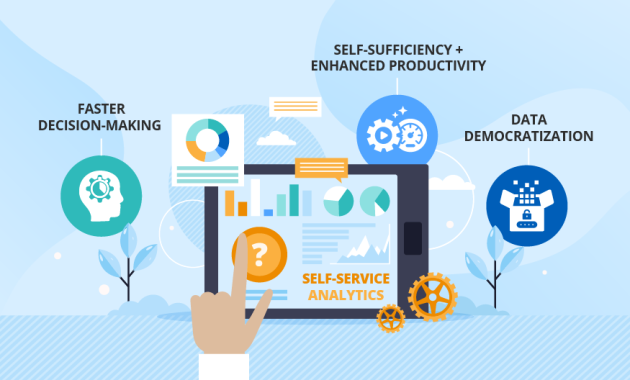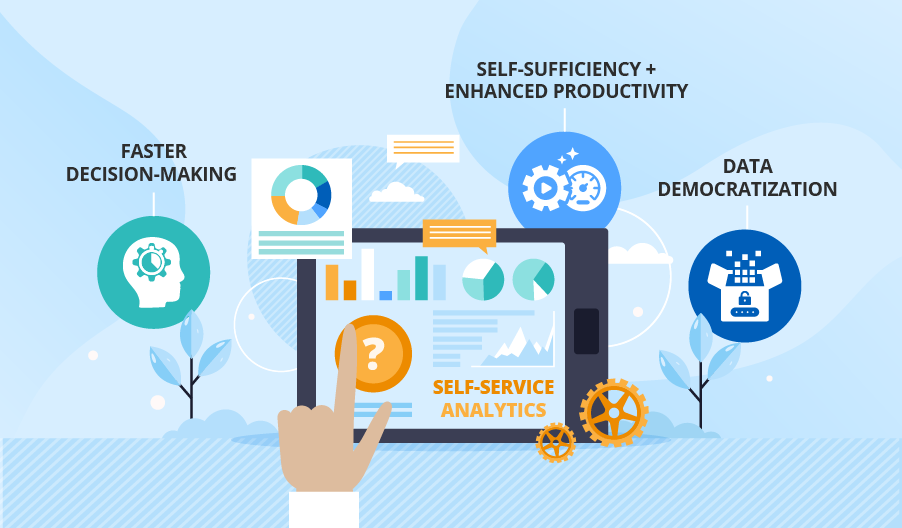
Unlocking Growth: How Self-Service Business Intelligence Software Empowers Growing Firms
In today’s data-driven landscape, the ability to quickly and effectively analyze information is crucial for business success. For growing firms, this capability is not just an advantage; it’s a necessity. Self-service business intelligence (BI) software has emerged as a powerful tool, enabling organizations to transform raw data into actionable insights. This article delves into the benefits of self-service business intelligence software for growing firms, exploring its features, advantages, and how it can drive sustainable growth.
The Changing Dynamics of Data Analysis
Traditional BI systems often required specialized technical expertise. This created bottlenecks, slowing down the decision-making process. Reports were generated by IT departments, leading to delays and a lack of agility. The rise of self-service business intelligence has revolutionized this process. It puts the power of data analysis directly into the hands of business users. This democratization of data empowers employees across departments to explore, analyze, and visualize data. They can make informed decisions without relying on IT or data science teams.
Key Features of Self-Service BI Software
Self-service business intelligence software offers a range of features. These are designed to make data analysis accessible and efficient. Here are some key components:
- Data Connectivity: The ability to connect to various data sources is critical. Modern self-service BI tools support connections to databases, cloud platforms, spreadsheets, and more.
- Data Preparation: Users can clean, transform, and prepare data for analysis. This eliminates the need for complex data wrangling by IT.
- Data Visualization: Interactive dashboards and reports allow users to visualize data. These are created using charts, graphs, and other visual elements.
- Data Exploration: Tools for ad-hoc analysis and data discovery enable users to explore data. They can identify trends and patterns.
- Collaboration and Sharing: Features for sharing insights and collaborating with colleagues are essential. This promotes data-driven decision-making across the organization.
Benefits for Growing Firms
Self-service business intelligence software provides several benefits. These are particularly valuable for growing firms. These firms often face unique challenges. These include rapid expansion, increased data volumes, and the need for scalability. Here’s how self-service BI can help:
- Improved Decision-Making: By providing real-time insights, self-service BI enables faster, more informed decisions. This leads to better outcomes.
- Increased Efficiency: Automating data analysis tasks frees up time. This allows employees to focus on strategic initiatives.
- Enhanced Collaboration: Data-driven insights can be shared across departments. This improves teamwork.
- Cost Savings: Reduced reliance on IT and data science teams lowers costs. This also improves operational efficiency.
- Scalability: Self-service BI solutions can scale with the firm. They handle increasing data volumes.
Real-World Applications
The applications of self-service business intelligence software for growing firms are vast. Here are a few examples:
- Sales and Marketing: Analyzing sales data, tracking marketing campaign performance, and identifying customer segments.
- Finance: Monitoring financial performance, forecasting revenue, and managing expenses.
- Operations: Optimizing supply chain, tracking inventory levels, and improving operational efficiency.
- Human Resources: Analyzing employee performance, managing recruitment efforts, and identifying training needs.
Choosing the Right Self-Service BI Software
Selecting the right self-service BI solution is critical. Consider these factors when evaluating different options:
- Ease of Use: The software should have an intuitive interface. This is important for non-technical users.
- Data Connectivity: Ensure the software supports your data sources.
- Data Visualization Capabilities: Look for tools that offer a wide range of visualization options.
- Scalability: The software should be able to handle your growing data volumes.
- Security: Ensure the software provides robust security features.
- Pricing: Evaluate the pricing models. They should align with your budget and needs.
- Support and Training: Consider the vendor’s support and training resources. These are important for user adoption.
Implementation and Best Practices
Implementing self-service BI successfully involves careful planning. Here are some best practices:
- Define Clear Objectives: Identify the specific business problems you want to solve.
- Involve Stakeholders: Engage users across departments. This ensures buy-in and adoption.
- Provide Training: Offer comprehensive training. This helps users become proficient.
- Establish Data Governance: Implement data governance policies. This ensures data quality and accuracy.
- Start Small and Scale: Begin with a pilot project. Then expand as you gain experience.
- Monitor and Evaluate: Track the impact of the software. Make adjustments as needed.
The Future of Self-Service BI
The future of self-service business intelligence is promising. Advancements in artificial intelligence (AI) and machine learning (ML) are enhancing capabilities. These improvements include:
- Automated Insights: AI-powered tools can automatically identify trends and anomalies.
- Predictive Analytics: ML models can predict future outcomes.
- Natural Language Processing: Users can interact with data using natural language.
These innovations will further empower growing firms. They will make data analysis more accessible and valuable. The growth of cloud-based BI solutions is also noteworthy. They offer greater flexibility and scalability. They reduce the need for on-premise infrastructure.
Conclusion: Empowering Growth with Self-Service BI
Self-service business intelligence software for growing firms is transforming the way businesses operate. By providing accessible, actionable insights, it empowers organizations to make data-driven decisions. This leads to improved efficiency, better decision-making, and sustainable growth. By carefully selecting and implementing the right solution, growing firms can unlock the full potential of their data. They can gain a competitive edge in today’s dynamic marketplace. [See also: The Role of Data Visualization in Business Strategy] [See also: How to Choose the Right BI Tool for Your Company] [See also: Data Governance Best Practices for Growing Businesses]

